OCZ Vector (256GB) Review
by Anand Lal Shimpi on November 27, 2012 9:10 PM ESTAnandTech Storage Bench 2011 - Light Workload
Our new light workload actually has more write operations than read operations. The split is as follows: 372,630 reads and 459,709 writes. The relatively close read/write ratio does better mimic a typical light workload (although even lighter workloads would be far more read centric).
The I/O breakdown is similar to the heavy workload at small IOs, however you'll notice that there are far fewer large IO transfers:
| AnandTech Storage Bench 2011 - Light Workload IO Breakdown | ||||
| IO Size | % of Total | |||
| 4KB | 27% | |||
| 16KB | 8% | |||
| 32KB | 6% | |||
| 64KB | 5% | |||
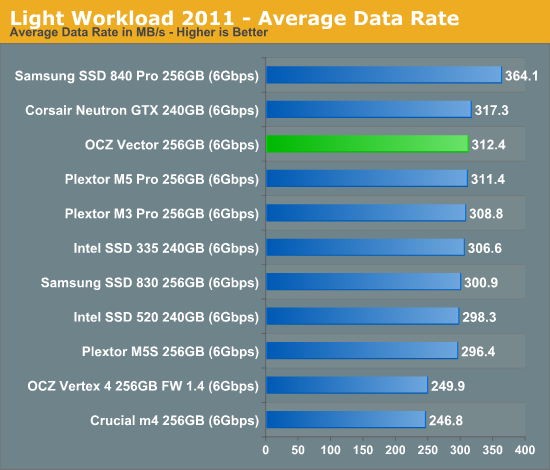
Our light workload remains Samsung's safe haven with the 840 Pro. OCZ's Vector does improve performance considerably over the Vertex 4 (+25%) but Samsung manages a 16% performance advantage here with the 840 Pro.
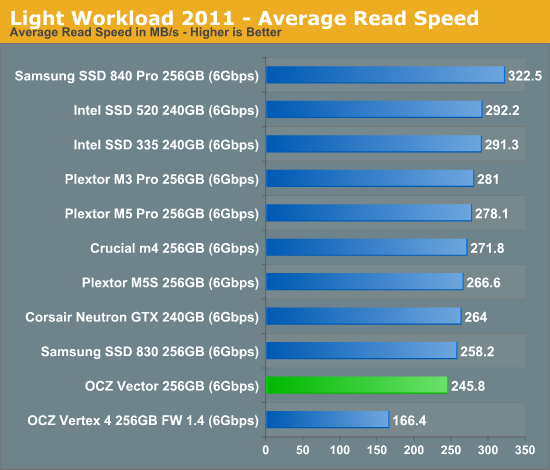
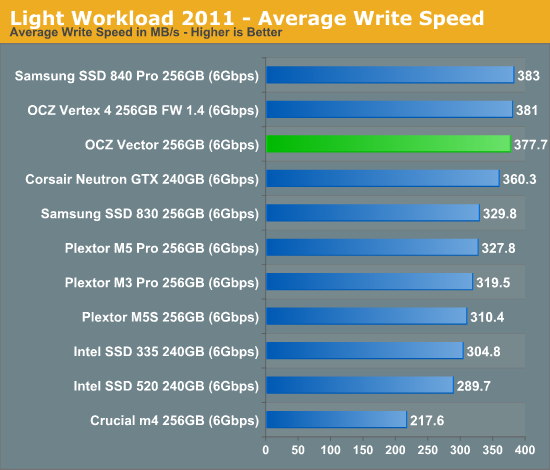

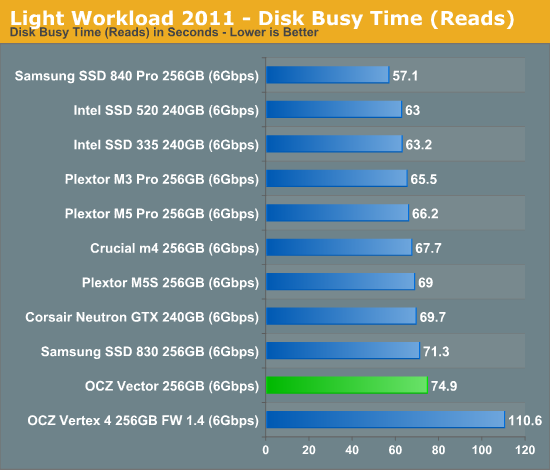
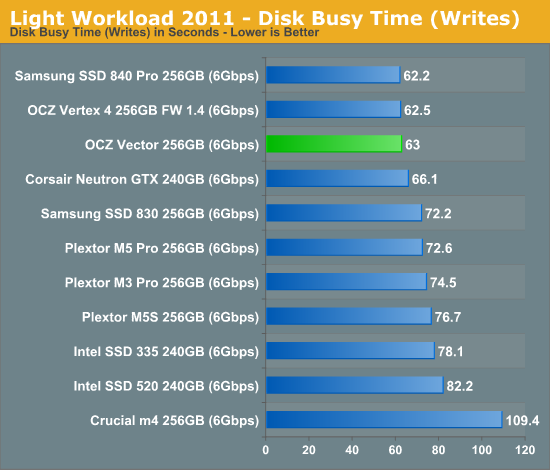










151 Comments
View All Comments
dj christian - Thursday, November 29, 2012 - link
"Now, according to Anandtech, a 256GB-labelled SSD actually *HAS* the full 256GiB (275GB) of flash memory. But you lose 8% of flash for provisioning, so you end up with around 238GiB (255GB) anyway. It displays as 238GB in Windows.If the SSDs really had 256GB (238GiB) of space as labelled, you'd subtract your 8% and get 235GB (219GiB) which displays as 219GB in Windows. "
Uuh what?
sully213 - Wednesday, November 28, 2012 - link
I'm pretty sure he's referring to the amount of NAND on the drive minus the 6.8% set aside as spare area, not the old mechanical meaning where you "lost" disk space when a drive was formatted because of base 10 to base 2 conversion.JellyRoll - Tuesday, November 27, 2012 - link
How long does the heavy test take? The longest recorded busy time was 967 seconds from the Crucial M4. This is only 16 minutes of activity. Does the trace replay in real time, or does it run compressed? 16 minutes surely doesnt seem to be that much of a long test.DerPuppy - Tuesday, November 27, 2012 - link
Quote from text "Note that disk busy time excludes any and all idles, this is just how long the SSD was busy doing something:"JellyRoll - Tuesday, November 27, 2012 - link
yes, I took note of that :). That is the reason for the question though, if there were an idea of how long the idle periods were we can take into account the amount of time the GC for each drive functions, and how well.Anand Lal Shimpi - Wednesday, November 28, 2012 - link
I truncate idles longer than 25 seconds during playback. The total runtime on the fastest drives ends up being around 1.5 hours.Take care,
Anand
Kristian Vättö - Wednesday, November 28, 2012 - link
And on Crucial v4 it took 7 hours...JellyRoll - Wednesday, November 28, 2012 - link
Wouldn't this compress the QD during the test period? If the SSDs recorded activity is QD2 for an hour, then the trace is replayed quickly this creates a high QD situation. QD2 for an hour compressed to 5 minutes is going to play back at a much higher QD.dj christian - Thursday, November 29, 2012 - link
What is QD?doylecc - Tuesday, December 4, 2012 - link
Que Depth